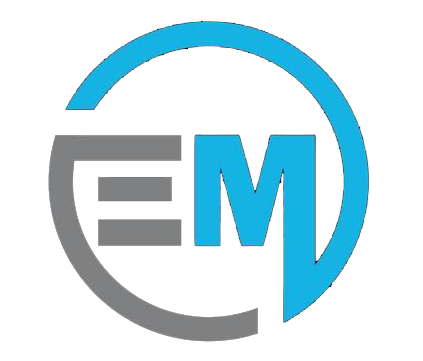In today’s digital age, businesses of all sizes are increasingly relying on mobile devices to enhance productivity, communication, and flexibility. However, with the rise in mobile device usage comes the need for robust security and management tools. This is where Mobile Device Management (MDM) software comes into play. MDM solutions help businesses ensure that their mobile devices, such as smartphones, tablets, and laptops, are secure, compliant, and properly configured.
This guide will delve into the importance of MDM software, its features, benefits, and the best MDM software available in 2024 to help businesses manage their mobile assets effectively.
1. What is Mobile Device Management (MDM)?
Mobile Device Management (MDM) refers to the administration of mobile devices, such as smartphones, tablets, and laptops, within an organization. MDM software allows IT departments to remotely manage and monitor the devices used by employees, ensuring they are secure, compliant with company policies, and optimized for productivity. MDM solutions provide centralized control over mobile devices and enable businesses to enforce security protocols, track usage, and manage apps and content across devices.
2. Why Do Businesses Need MDM Software?
Security: With mobile devices being prime targets for cyberattacks, MDM software helps businesses enforce security measures such as password policies, encryption, and remote wipe capabilities to protect sensitive data.
Device Management: As businesses increasingly adopt Bring Your Own Device (BYOD) policies, it’s crucial to manage both company-owned and personal devices that access corporate data. MDM software ensures these devices are properly configured and monitored.
Compliance: Many industries have strict regulatory requirements regarding data protection (e.g., GDPR, HIPAA). MDM software helps organizations comply with these regulations by securing mobile devices and ensuring that sensitive data is handled appropriately.
Remote Monitoring and Control: MDM software allows IT administrators to remotely monitor devices for potential threats, deploy updates, and make adjustments without needing physical access to the device.
App Management: MDM software helps organizations manage the installation, updates, and removal of apps on mobile devices, ensuring that only approved apps are in use.
Cost Savings: By providing visibility into device usage, MDM software helps organizations optimize mobile device spending and reduce unnecessary expenses.
3. Key Features of MDM Software
When evaluating MDM solutions, consider the following key features:
Device Enrollment: Easy device enrollment process to add new devices to the management system.
Remote Device Management: Ability to remotely configure, monitor, and update devices.
Security Policies: Tools to enforce password policies, data encryption, VPN, and other security protocols.
Remote Wipe: The ability to remotely erase all data from a lost or stolen device to protect sensitive information.
App Management: Manage and control the installation, update, and removal of apps on mobile devices.
Geolocation Tracking: Track the location of devices to prevent theft and ensure security.
Compliance Management: Tools to ensure that mobile devices comply with industry regulations, such as GDPR, HIPAA, or PCI DSS.
Content Management: Control which content is accessible on devices, ensuring that only authorized data is available.
Multi-Platform Support: Support for a wide range of devices, including iOS, Android, and Windows devices.
User and Device Grouping: The ability to create groups based on user roles or device types for easier management and policy enforcement.
Reporting and Analytics: Real-time reporting and analytics to monitor device usage, compliance, and security incidents.
4. Top Mobile Device Management Software for 2024
1. Microsoft Intune
Microsoft Intune is a cloud-based MDM solution that integrates with Microsoft 365 and Azure Active Directory. It allows businesses to manage devices, apps, and users while enforcing security policies across multiple platforms.
Best for: Businesses using Microsoft 365 and Azure ecosystems.
Features: Device and app management, conditional access policies, integration with Microsoft tools, and remote wipe capabilities.
Pricing: Starts at $6 per user per month.
2. VMware Workspace ONE
VMware Workspace ONE provides a unified endpoint management (UEM) solution that helps businesses manage and secure mobile devices, desktops, and applications from a single platform.
Best for: Larger organizations that require robust, scalable solutions for managing various endpoints.
Features: Device and app management, security enforcement, identity management, and analytics.
Pricing: Custom pricing based on enterprise needs.
3. MobileIron (now part of Ivanti)
MobileIron is an MDM solution that focuses on securing mobile devices, applications, and data across the enterprise. It provides a comprehensive security framework with app management and threat protection capabilities.
Best for: Enterprises looking for comprehensive mobile security.
Features: Device management, app management, security policies, secure content management, and multi-platform support.
Pricing: Custom pricing based on business needs.
4. Jamf Pro
Jamf Pro is an MDM solution specifically designed for managing Apple devices, making it an ideal choice for businesses that rely heavily on Macs, iPhones, and iPads.
Best for: Organizations using Apple products in their workforce.
Features: Device configuration, app management, security policies, and inventory management for Apple devices.
Pricing: Starts at $3.33 per device per month.
5. Citrix Endpoint Management
Citrix Endpoint Management is a comprehensive solution for managing mobile devices, desktops, and apps in a secure and compliant manner. It integrates seamlessly with other Citrix products.
Best for: Businesses that rely on Citrix for virtual desktop infrastructure (VDI) or other Citrix products.
Features: Mobile device management, app management, security policies, data loss prevention, and remote wipe.
Pricing: Custom pricing based on business needs.
5. How to Choose the Right MDM Software for Your Business
When selecting the right MDM solution, consider the following:
Device Compatibility: Ensure the software supports the types of devices (iOS, Android, Windows) that your organization uses.
Scalability: Choose software that can scale with your business growth and adapt to the addition of new devices or platforms.
Security Features: Evaluate the security features, including encryption, remote wipe, and threat detection capabilities.
Ease of Use: The software should be user-friendly and allow IT teams to quickly set up and manage devices without complex configurations.
Integration with Existing Systems: Ensure the MDM solution integrates with your existing IT infrastructure, including enterprise applications, security systems, and cloud services.
Support and Customer Service: Choose a vendor that provides excellent support and resources, such as documentation, training, and customer service.
6. Benefits of Mobile Device Management
Enhanced Security: Enforce strong security measures, such as encryption, remote wipe, and access control, to protect sensitive business data on mobile devices.
Compliance Assurance: Help ensure your mobile devices comply with industry regulations, reducing the risk of non-compliance penalties.
Increased Productivity: Simplify the management of apps, devices, and data, enabling employees to work efficiently from anywhere while ensuring security.
Cost Efficiency: By optimizing device usage and reducing security breaches, MDM software can help businesses save on potential costs related to data loss or device theft.
Centralized Control: Manage all mobile devices from a centralized console, providing IT administrators with full visibility and control over corporate devices.
7. Common Challenges of MDM Software
User Resistance: Employees may be resistant to security policies or device restrictions, which can lead to lower adoption rates.
Integration Complexities: Integrating MDM software with existing systems and workflows may require additional configuration and testing.
Ongoing Maintenance: MDM solutions require regular updates, monitoring, and troubleshooting, which can strain IT resources.
Data Privacy Concerns: Employees may be concerned about their privacy when personal devices are monitored or controlled by MDM software.
8. Future Trends in Mobile Device Management
AI and Automation: MDM software will increasingly incorporate AI and machine learning to automate tasks like device enrollment, threat detection, and policy enforcement.
Zero Trust Security: The adoption of zero-trust security models will gain traction, focusing on continuous verification of users and devices, regardless of location.
Unified Endpoint Management (UEM): The trend toward managing all endpoints (mobile, desktops, IoT devices) from a single platform will continue to grow, simplifying IT operations.
Edge Computing Integration: As edge computing grows, MDM systems will likely integrate with edge devices to enhance performance and security at the network’s edge.
9. Conclusion
Mobile Device Management (
MDM) software is essential for businesses looking to secure and manage their growing fleet of mobile devices. With the right MDM solution, businesses can enforce security policies, ensure regulatory compliance, and improve operational efficiency. By carefully considering factors like device compatibility, security features, scalability, and integration capabilities, businesses can choose the best MDM software to meet their needs and protect their valuable mobile assets in 2024 and beyond.

